The Big Dipper is the most recognizable asterism in the night sky, and it can be found in the constellation Ursa Major.
Key Facts & Summary
- The Big Dipper is one of the largest and most recognizable asterisms in the night sky.
- This asterism is located in the northern hemisphere, and it never sets below the horizon.
- The Big Dipper is part of the Ursa Major Constellation, which is the third largest constellation in the sky.
- Its brightest star, Alioth, is 102 times brighter than the Sun, with a magnitude of 1.8.
- The Big Dipper is used as a navigation tool for centuries as two of its stars function as pointers to the North Star.
- The stars Mizar and Alcor form a double star, the first such star to be discovered.
- The Big Dipper asterism can be used as a celestial clock, and it can be used as a guide to the other stars in the night sky.
- It is visible between +90o and -30o latitude, and it can be observed best during April at 21:00 (9 p.m.)
- Seven bright stars form the Big Dipper, namely Dubhe, Merak, Phecda, Alioth, Megrez, Mizar, and Alkaid.
- Six of these stars are of magnitude 2, while Megrez is of magnitude 3.
- In the United Kingdom, this asterism is mostly known as the Plough.
- Some other famous names include the Great Wagon or Saptarishi.
- One of the stars in the Big Dipper, namely Alkaid, was believed to have magical properties during the medieval age.
- It was part of the fifteen Behenian fixed stars.
- The farthest star from this asterism is Dubhe.
- The closest star to us is Merak.
- The Big Dipper gained a lot of attention during ancient times, and it is known throughout the world under many names.
- Many confuse the asterism with the whole constellation of Ursa Major. However, Ursa Major has many more stars.
The Big Dipper for Kids
The Big Dipper is among the most famous asterisms in the night sky. The ancients knew about it, and many civilizations attributed great significance to it.
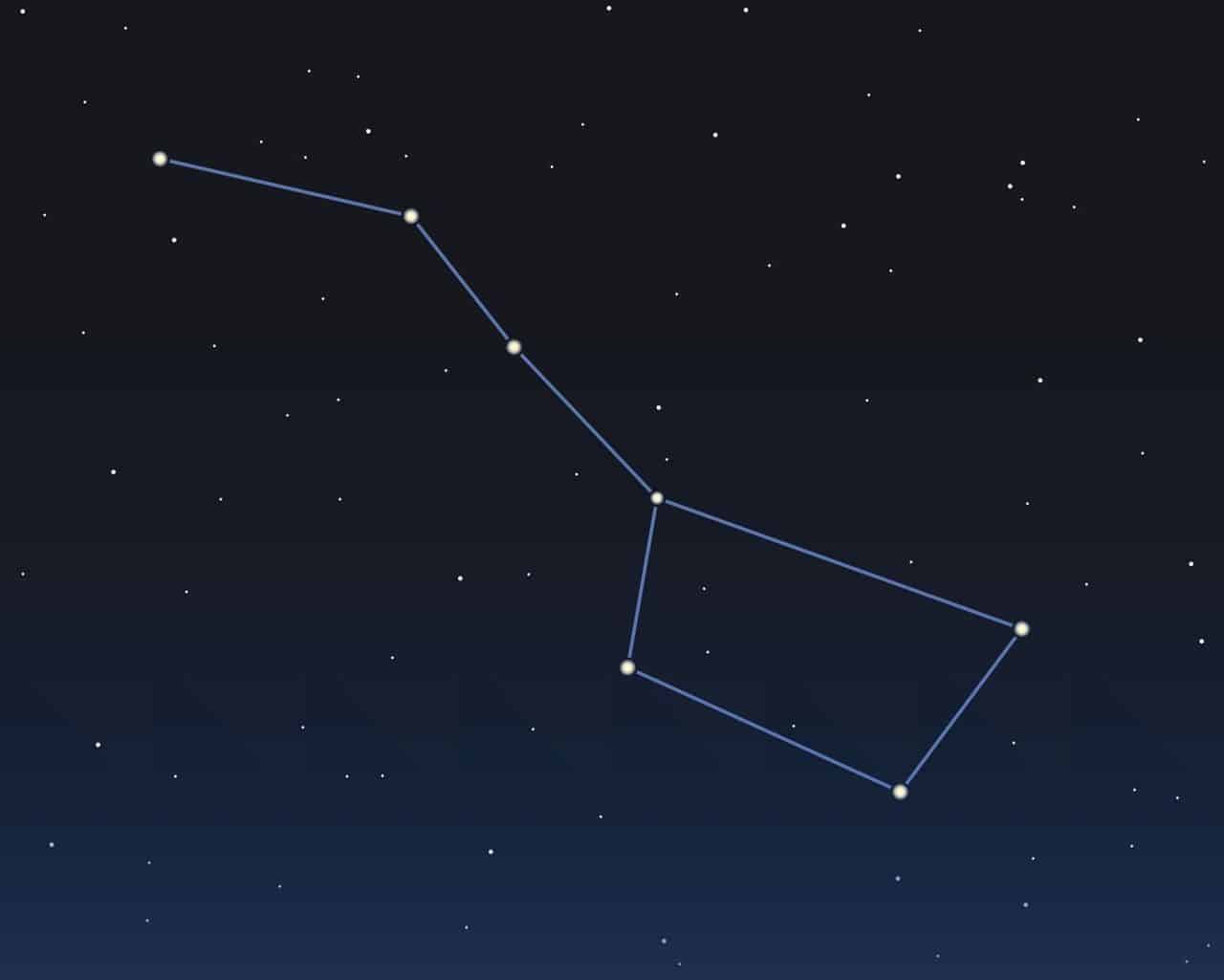
Many have associated the Big Dipper in their myths, tales, and legends. Throughout the world, the Big Dipper is among the most easily recognizable star patterns in the sky. Let's see what the Big Dipper is all about!
What is the Big Dipper?
The Big Dipper, also known as the Plough, is one of the largest and most recognizable asterisms in the night sky. It consists of seven bright stars, three of which are known as "the handle" of the Dipper and the other four as "the bowl" or "the body."
The Big Dipper is located in Ursa Major, the third-largest constellation in the sky, covering over 1,280 square degrees.
The Big Dipper stars are Dubhe, Merak, Phecda, Alioth, Megrez, Mizar, and Alkaid, and they have apparent magnitudes between 1.8 and 2.4.
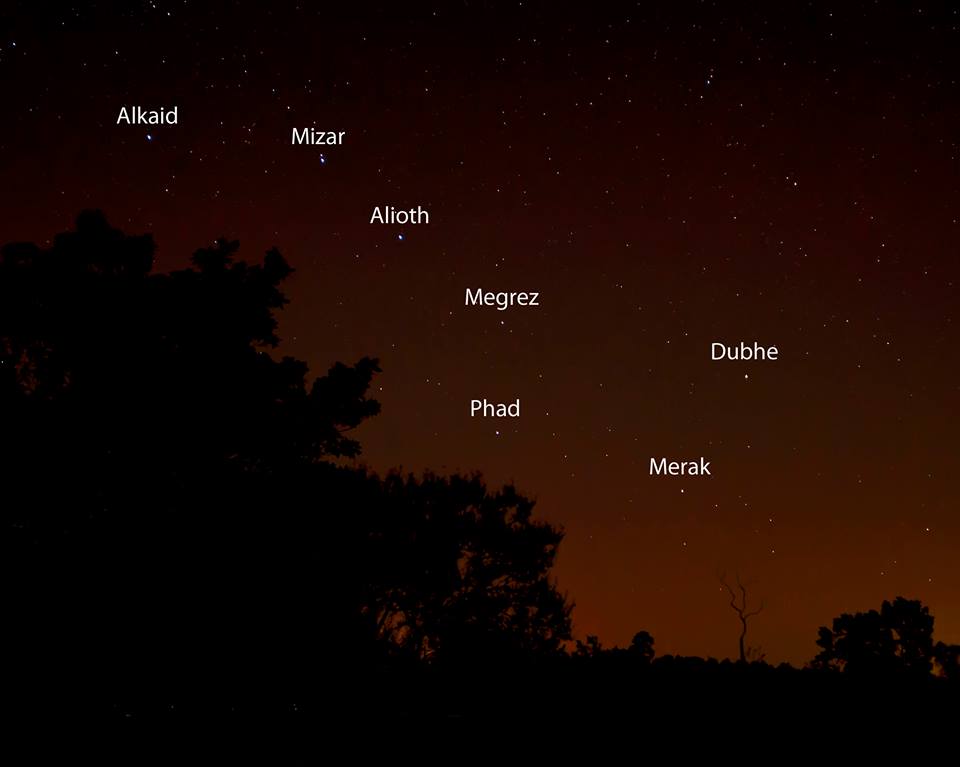
Alioth, the brightest of the seven stars, has a magnitude of 1.8, and it is found 86 light-years away from Earth, and it is 102 times brighter than the Sun.
Dubhe is Big Dipper's second brightest star, with a magnitude of 1.8. It is found 124 light-years away, and it 316 times more luminous than our Sun. Dubhe and Merak form the Pointer, a line which is used to find Polaris, the North Star.
How Do you Find the Big Dipper?
The Big Dipper is a very familiar star pattern, and it is also very easy to recognize when you look at the sky. If you want to find the Big Dipper, you have to keep in mind that it is located in the northern hemisphere; therefore, you need to look above the north horizon to see it.
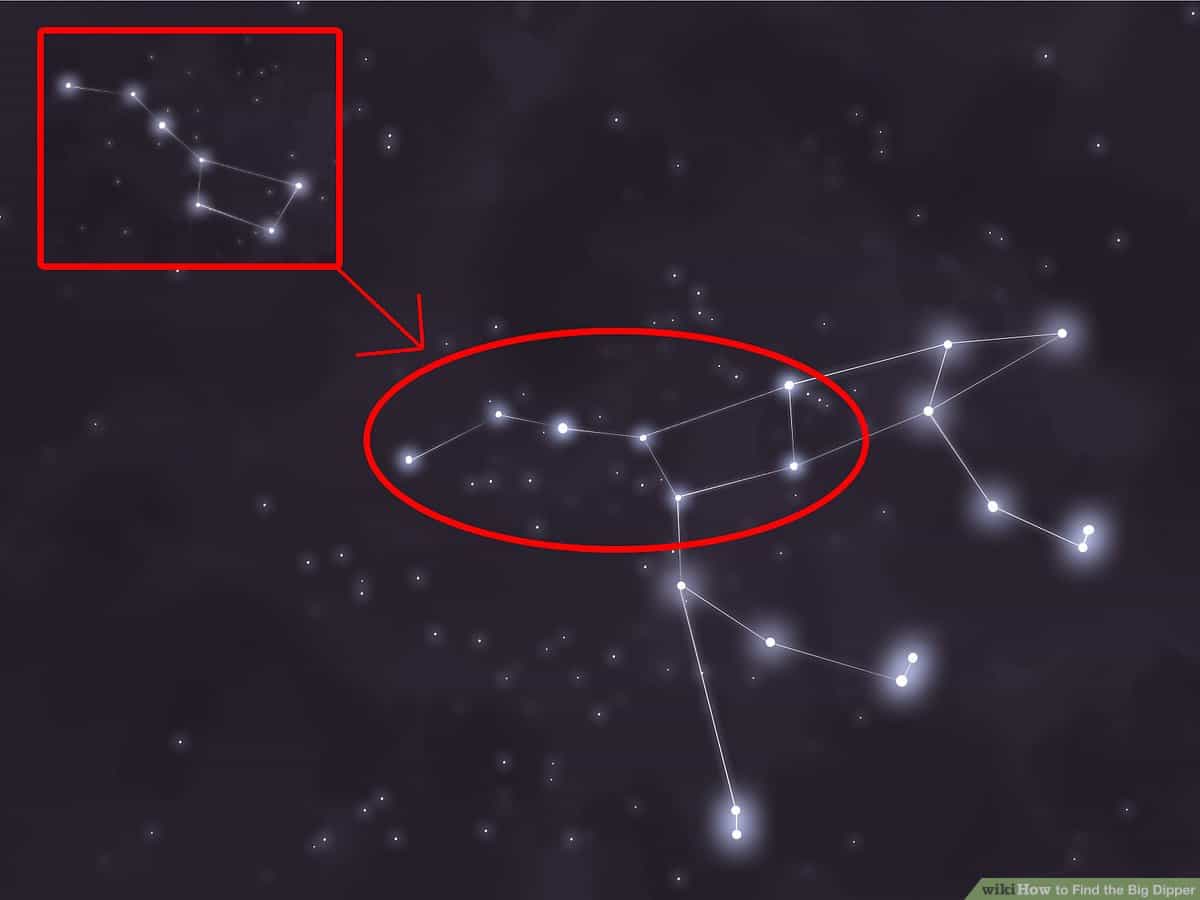
The Big Dipper is formed out of seven bright stars that are shaped like a plough or like an irregular kite. Since the asterism is continually rotating around the North Star, you will see it in different positions throughout the year.
During autumn and winter, the Big Dipper will set closer to the horizon, while in spring and summer, it will be higher in the sky, and it will also appear upside-down. The rule is simple and easy to remember: fall down and spring up.
Why is the Big Dipper Called the Big Dipper?
The Big Dipper is associated with numerous myths and legends throughout history, but the reason why it is called like this is quite simple. Because it looks like a dipper, both the Little Dipper and the Big Dipper gained their name because of their aspect.
Where is the Big Dipper Located?
The Big Dipper is located in the constellation of Ursa Major, the third largest constellation in the night sky. It is found in the second quadrant of the northern hemisphere (NQ2), and its neighboring constellations are Camelopardalis, Coma Berenices, Lynx, Draco, Bootes, Canes Venatici, Leo, and Leo Minor.
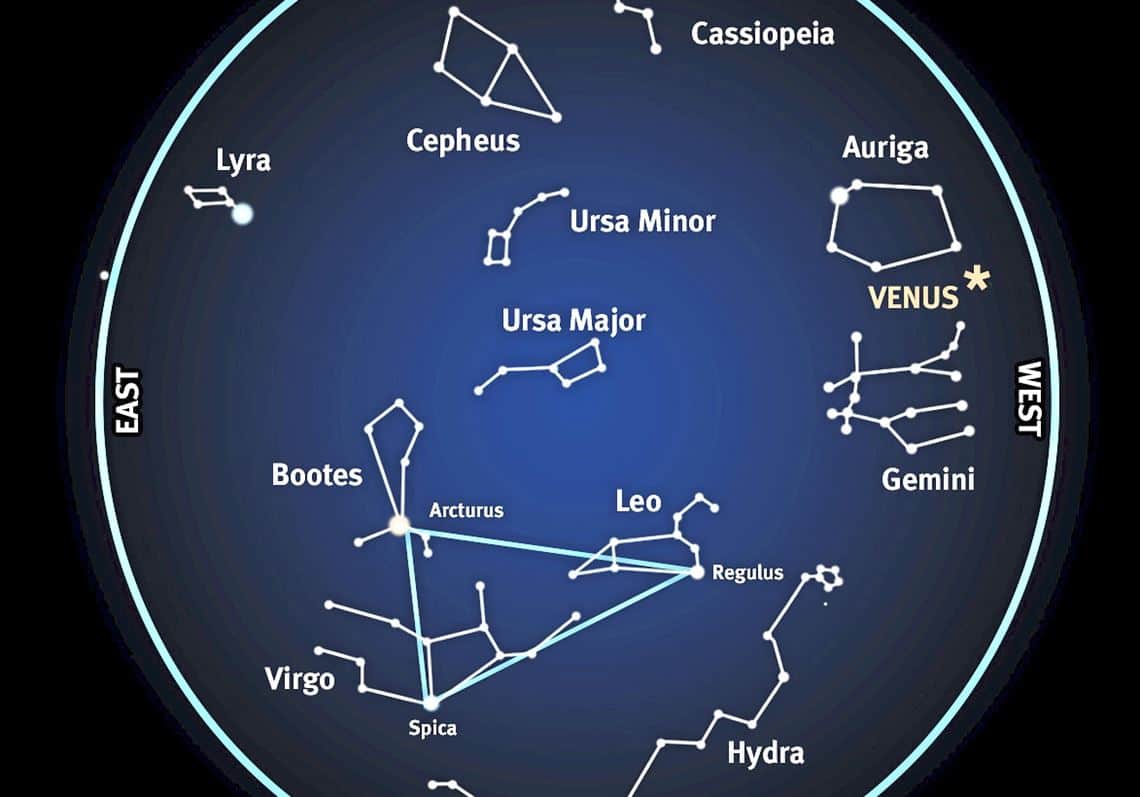
The Big Dipper is visible between +90o and -30o latitude, and it can be observed best during April at 21:00 (9 p.m.)
Fun Kids Facts About the Big Dipper
- In South Korean mythology, Ursa Major is also called "The seven stars of the north." It is said that a widow, along with her seven sons, used to go by the house of a widower, but to get there, they had to cross a river. Each son places a stone into the water so that it would be easier to get to the other side. The mother didn't know who put the stepping stones there, so she blessed them, and when her sons died, they became the constellation of Ursa Major.
- According to a Native American legend, the Big Dipper bowl is a bear, and the three stars that form the handle are three hunters trying to capture the bear. In another interpretation, the handle represents three cubs that follow their mother.
-In an Arabian story, the Big Dipper bowl illustrates a coffin, and the three stars of the handle, Alkaid, Mizar, and Alioth, are mourners who follow the casket.
- Mizar, one of the Big Dipper's stars, together with Alcor, forms a double star. It was the first such star to be discovered in 1662 and then the first to be ever photographed in 1857.
-The Big Dipper was known among the black slaves in the United States as the "Drinking Gourd." They used it to find north and to follow their path to freedom. Similarly, the asterism was used by the Jews who were escaping the concentration camps during World War II.
Size and Comparison
The Big Dipper is one of the largest asterisms in the sky. It covers up to 20 degrees of the northern hemisphere, and it is considerably bigger than the Little Dipper. Out of the 88 modern constellations, Ursa Major is the third largest, spreading for over 1,280 degrees.
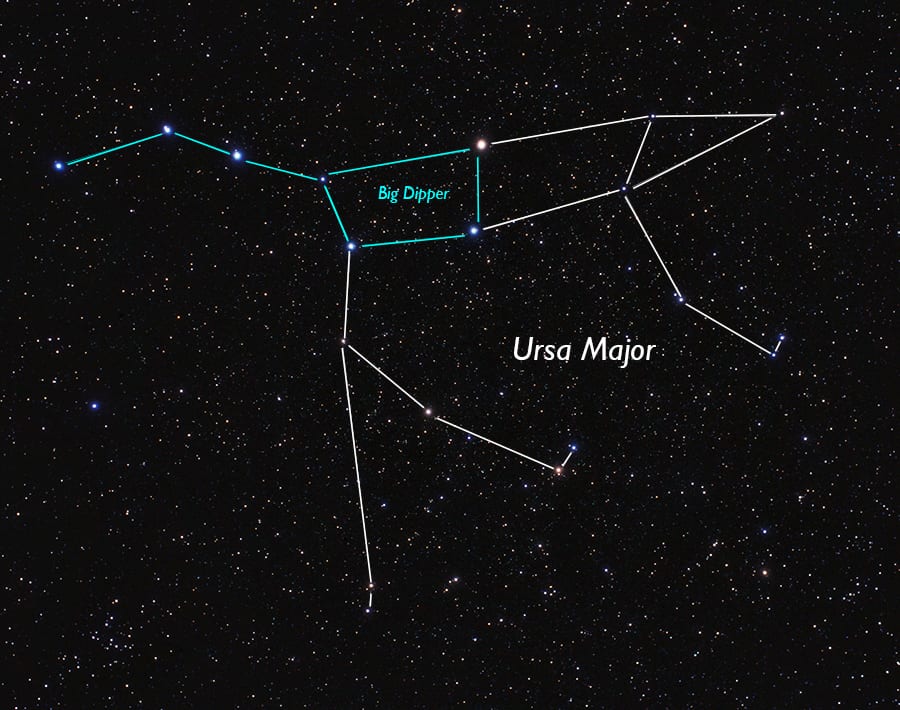
Trivia
Big Dipper vs Little Dipper
The Big Dipper and the Little Dipper are two of the most known asterism, both of them holding an essential role throughout history. Since it is easy to recognize their pattern, they were used as a reference point, both on land and on water.
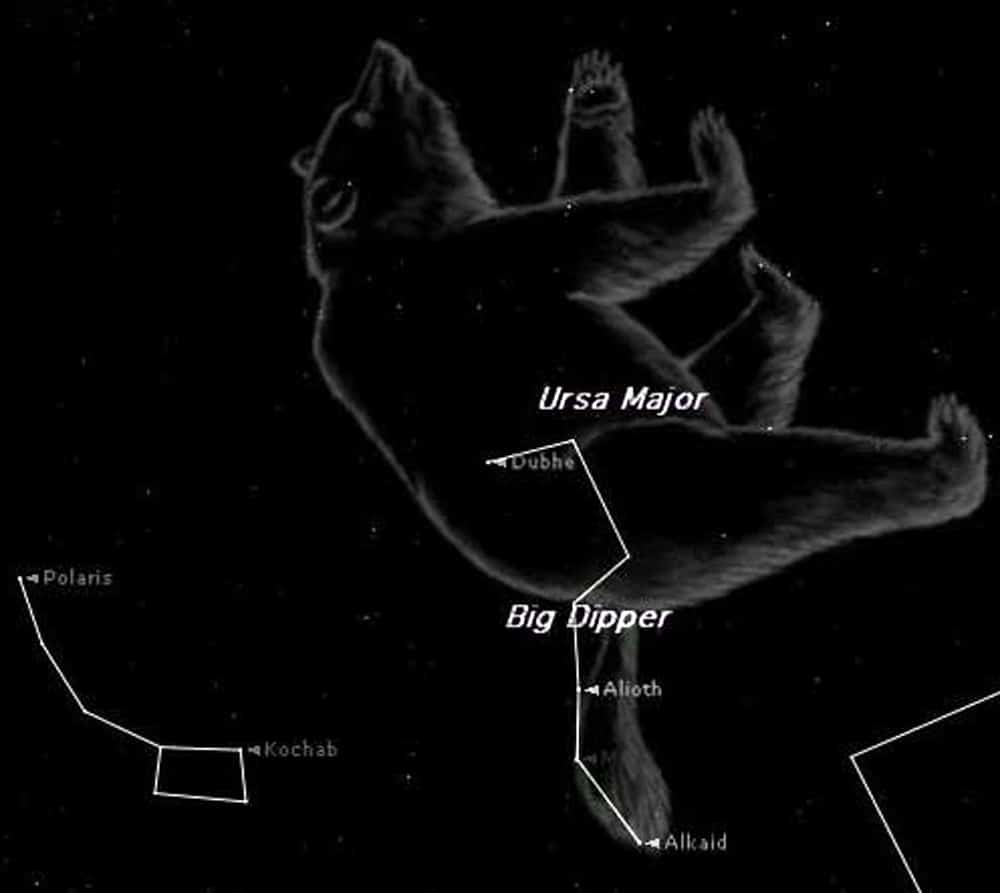
The Big Dipper is easier to spot because its stars are a lot brighter, while the Little Dipper has relatively dimmer stars, except for its main star, Polaris.
What is the Little Dipper?
The Little Dipper is an asterism that belongs to the constellation of Ursa Minor. It consists of seven stars, the most important one being Polaris, also known as the North Star.
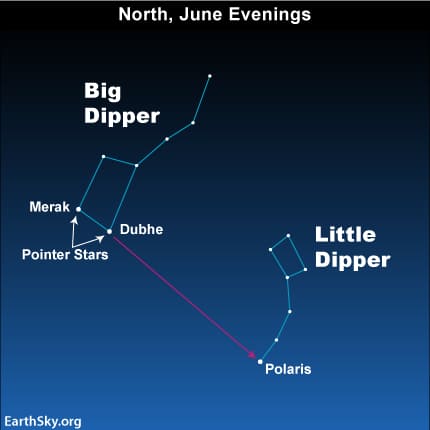
What is the Little Dipper Used For?
The Little Dipper is used mainly by sailors as its main star; Polaris indicates the north since it is the closest bright star to the pole.
You can also use the North Star to find your latitude on Earth: if you find yourself the equator, Polaris will be near the horizon, but if you are at the North Pole, the star will be right above you.
What Does the Big Dipper Do?
The Big Dipper might be used as a guide to other stars in the night sky, and for that reason, it is used primarily as a navigation tool. For example, if you draw a straight line up, continuing the imaginary line between Merak and Dubhe, you will reach the North Star, also known as Polaris.

If you extend the line between Megrez and Phecda, you will find Thuban, also known as Draconis, a star that served as the pole star 4.000 years ago.
Similarly, if you continue the Dipper's handle, you will find the bright star Arcturus, and if you keep going, you will discover Spica, one of the brightest stars in the sky and the most shining star in the constellation of Virgo.
Other Characteristics of the Big Dipper
The Big Dipper is a circumpolar asterism. That means it never sets, but instead, it revolves around the north pole, more precisely around the North Star.
For this particular reason, it can be used as a celestial clock. Its full rotation takes precisely 23 hours and 56 minutes, which is four minutes shorter than the typical 24-hour day. But regardless of this, the Big Dipper can be used to keep track of time when there is no other viable option.
Big Dipper Notes
- The Big Dipper is among the most recognizable asterisms in the sky.
- It is part of the Ursa Major Constellation, and it can be found in the northern hemisphere.
- This asterism is made up of seven bright stars: Dubhe, Merak, Phecda, Alioth, Megrez, Mizar, and Alkaid.
- The Big Dipper can be mainly used as a navigation tool.
- The asterism can be used as a celestial clock, and it can be used as a guide to the other stars in the night sky.
Sources:
Image Sources:
- https://i.pinimg.com/originals/0e/26/52/0e265200f97c62a425aa9aa0fc8b4e56.jpg
- https://earthsky.org/upl/2012/09/big-dipper-labeled-Ken-Christison-9-30-2013.jpg
- https://www.wikihow.com/images/thumb/9/9a/Find-the-Big-Dipper-Step-10.jpg/aid1030003-v4-1200px-Find-the-Big-Dipper-Step-10.jpg
- https://9b16f79ca967fd0708d1-2713572fef44aa49ec323e813b06d2d9.ssl.cf2.rackcdn.com/1140x_a10-7_cTC/MayStarChart-with-Spring-Triangle-1-1588624191.jpg
- https://skyandtelescope.org/wp-content/uploads/Fujii_Ursa-Major-Labeled-900x710-2.jpg
- https://media4.s-nbcnews.com/i/MSNBC/Components/Photo/_new/090320-big-dipper-hmed2p.jpg
- https://earthsky.org/upl/2011/06/11june14_430_2.jpg
- https://www.duluthnewstribune.com/incoming/6558625-mt7bbl-Arc-Big-Dipper-map_S2.jpg/alternates/BASE_LANDSCAPE/Arc-Big-Dipper-map_S2.jpg
